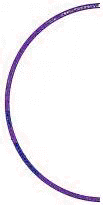Blood Vessels |
|
THE VASCULAR SYSTEM OF BLOOD VESSELS must:
BLOOD VESSELS There are three main types of blood vessels:
The vascular system is composed of arteries, arterioles, capillaries, venules and veins. The structure of the vessels in the different parts of the vascular system varies and the differences relate directly to the function of each type of vessel. The walls of all the blood vessels, except the capillaries which are only one cell thick, have the same basic components but the proportion of the components varies with function. Table 1. Comparison between different types of blood vessels
All blood vessels (except capillaries as mentioned above) are composed of three layers surrounding a central blood carrying canal (known as the lumen). The three layers vary in prominence in different vessel types. The outer layer of blood vessels is composed largely of collagen, but smooth muscle cells may be present, particularly in veins. This is often the most prominent layer in the walls of veins. The middle layer in a blood vessel wall and is composed predominantly of smooth muscle reinforced by organised layers of elastic tissue which form elastic laminae. It is particularly prominent in arteries, being relatively indistinct in veins and virtually non-existent in very small vessels. In vessels which are close to the heart, receiving the full thrust of the systolic pressure wave, elastic tissue is very well developed, hence the term elastic arteries. The inner layer is composed of a lining layer of highly specialised multifunctional flattened epithelial cells termed endothelium. It is the only layer that is present in all blood vessels. |



